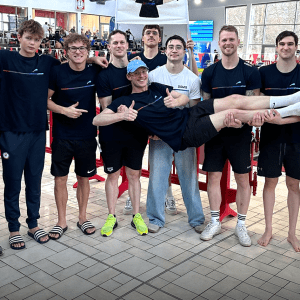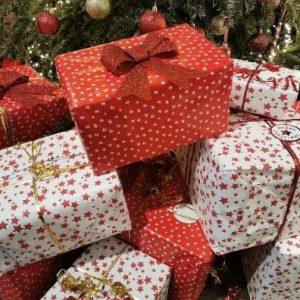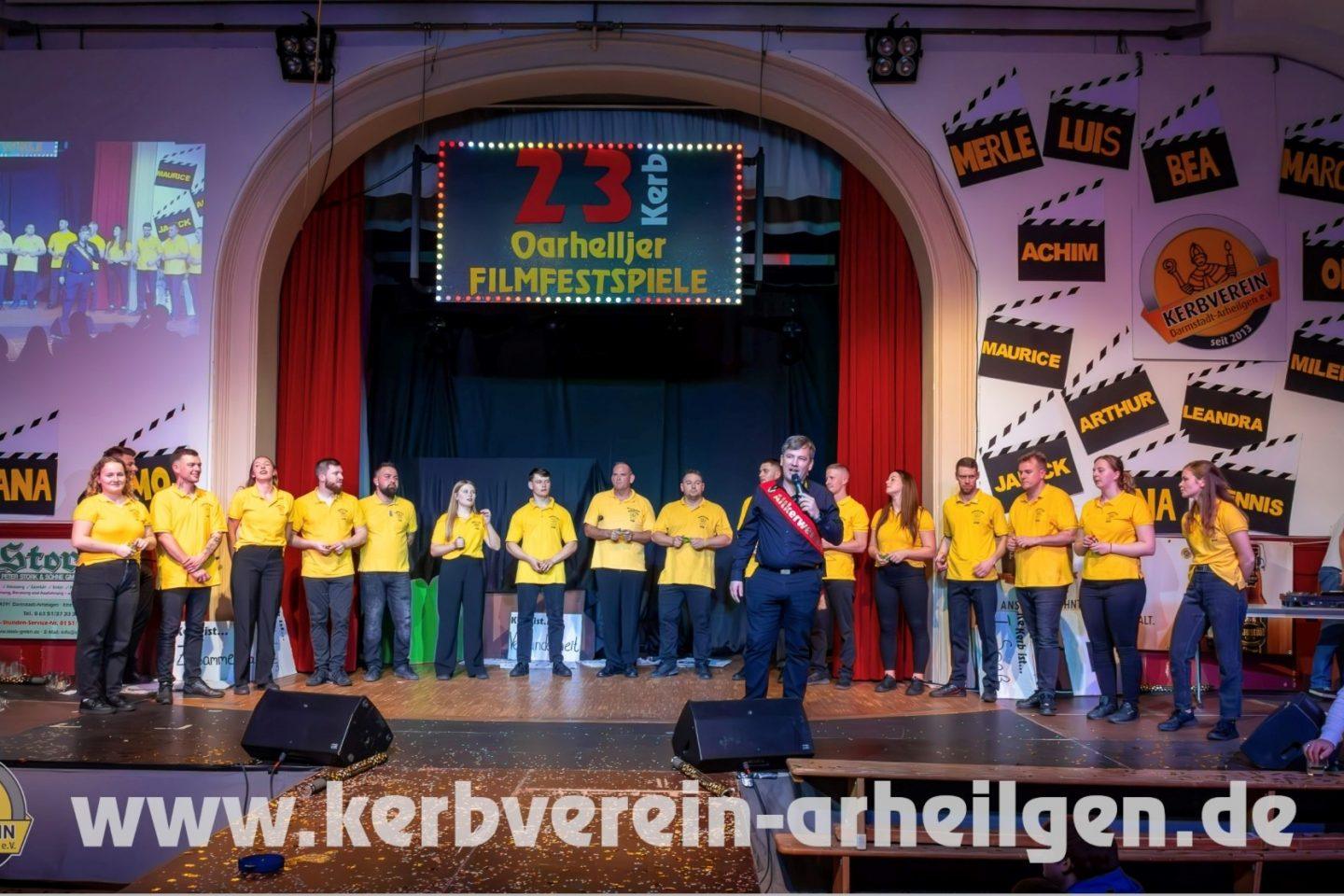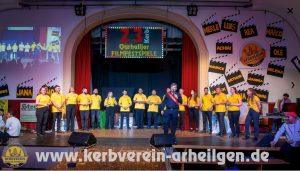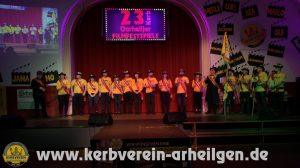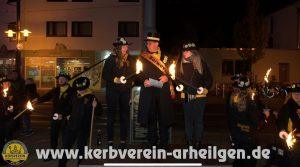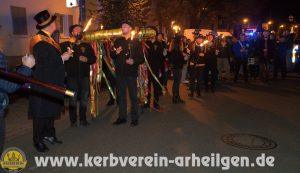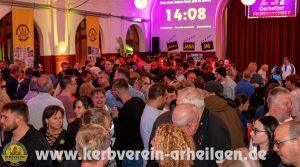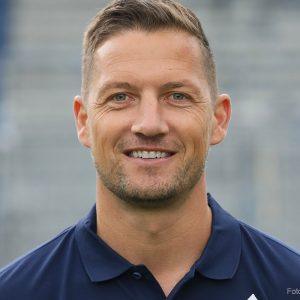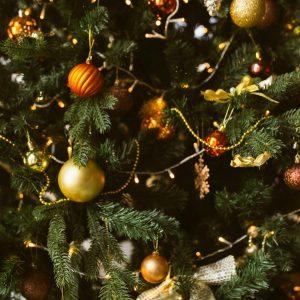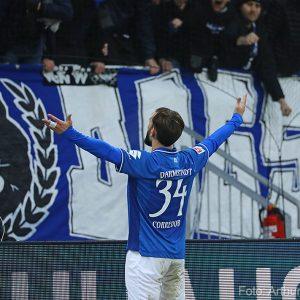Kerbverein Arheilgen on history, community and strong partners
The "Oarhelljer Kerb" (Arheilgen Fair) takes place this year from October 30th to November 4th, 2025, and is the heart and soul of the district. It's a festival that combines history, community, and passion. For almost 600 years, the church fair has been celebrated in Arheilgen, and to this day, the tradition lives on thanks to the people who shape it with such dedication. One of them is Timo Köcher from the Arheilgen Fair Association. In conversation with Alexander Götz (DA.news), he explains how the church fair of 1427, originally a religious event , has evolved into a modern, intergenerational local festival with cultural and social highlights, why volunteer work is more important than ever, and what role strong partners like Merck play in the future of the fair.
The Arheilgen Kerb Association
The "Oarhelljer Kerb" is far more than a folk festival—it is a living history, a village community, and a symbol of identity. The Arheilgen Kerb Association ensures that this tradition remains alive and is continually revived. As early as the 15th century, Arheilgen hosted the first church festival, and to this day, the Kerb reflects the history of the district. With a great deal of passion, organizational talent, and community spirit, those involved succeed each year in putting on a festival that combines tradition and modernity.
How did the Kerb tradition originate in Arheilgen?
Timo Köcher: The first church consecration took place in 1427 – the year in which the first church in Arheilgen, today's Resurrection Church, was consecrated. Originally, the Kerb was a religious festival, which over time developed into a folk festival with a fair atmosphere. Vendor stalls and entertainment offerings are documented as early as 1603. It's also interesting to note that the Arheilger Kerb used to be celebrated in August. However, in 1603, at the request of the people of Arheilgen, the Landgrave's government approved a move to the Sunday after All Saints' Day because the harvest season meant too much work in August. Today, we traditionally celebrate the "Oarhelljer Kerb" in late autumn – from the end of October to the beginning of November – in keeping with this ancient relocation to a quieter time of year.
What role does the association play for the neighborhood today?
Timo Köcher: The Kerbverein has long been more than just organizing a folk festival. We see ourselves as a social institution that connects neighborhoods, preserves traditions, and fosters identity. Without the association, the Kerb might still exist—but no longer as a true village festival for the local people, but merely as an event. We want people to meet here, celebrate together, and feel: This is our Kerb.
What is special about this year's Kerb?
Timo Köcher: This year the Kerb begins with a cultural note: The artist group SchuppenArt will open the festivities with a vernissage under the motto "Windmond" - a beautiful start that combines art and tradition. The Seniorenkerb , followed by a big show program by the Kerbmannschaft in the evening. Sunday is all about families: The Kinderkerb starts at 11 a.m. in the Löwensaal , accompanied by games and fun activities. We are also offering a historical tour under the motto "Stories and Pictures from Alt-Oarhellje" . The result is a festival that combines history, culture and community in a wonderful way.
Who ensures everything runs smoothly behind the scenes?
Timo Köcher: Behind the Oarhelljer Kerb isn't a professional event team, but rather a dedicated community of volunteers, clubs, and members. They plan, craft, organize, and help throughout the year. Our motto is: "The Kerb is only as beautiful as we make it." This togetherness makes the festival special – because it is truly supported by the village community.
What challenges do you face when organizing such festivals?
Timo Köcher: The organization is a mixture of passion, logistics, and sometimes even local politics. Of course, there are many challenges – from bureaucracy and permits to rising costs and a lack of volunteers, all the way to coordinating the many participants. Sustainability and responsibility are also playing an increasingly important role. But in the end, the joy prevails: because despite all the hurdles, every year an entire village manages to celebrate together. Without stress, there's no festival – but without a festival, there's no Arheilgen.
How can new members or volunteers get involved?
Timo Köcher: It's simple: every helping hand is welcome! New members or supporters can get as involved as they want – from occasional assistance to active club work. No one has to be a "Kerb pro." Anyone who wants to get involved can reach us at kerbverein-arheilgen.de , by email at info@kerbverein-arheilgen.de, or via Instagram and Facebook (@kerbverein.arheilgen). And of course, you can also get involved in person: Just ask someone in the Löwensaal – we appreciate any support.
Why is the partnership with Merck so valuable?
Timo Köcher: A partner like Merck creates new opportunities for us. Their support gives us more flexibility in technology, security, and decoration – and allows us to implement cultural or sustainable projects that go beyond the traditional folk festival. At the same time, the partnership strengthens trust within the neighborhood: People see that the festival is supported by the community – but also by strong partners who feel a connection to Arheilgen. This creates a foundation for long-term planning and new ideas.
Are there things that can only be achieved with a strong partner?
Timo Köcher: Absolutely. With a strong partner like Merck, a village festival becomes a sustainable community project—safer, more professional, more sustainable, and more socially inclusive. Or, as we say: "Merck not only gives us resources—but also opportunities."
Liveable Darmstadt
powered by MerckClubs are the heart of a community. They promote social integration and bring people together. They enrich local life through cultural and sporting activities, offer educational opportunities, and engage in social projects. In short: They make a city like Darmstadt a livable place.
But that costs money. Membership fees aren't always enough. In this series, we present selected Darmstadt clubs supported by Merck – be it in sports, culture, the common good, or science education.
Each of these clubs has a unique history and contributes to strengthening the community in its own way. We asked the leaders what defines their club and how the partnership with Merck not only provides financial support but also fosters growth and development.
Learn more about the diverse nature of Darmstadt's club landscape and how Merck and its partners are working together to achieve more – for a region worth living in.

